Why Does My Dog Lean on Me With His Backside? [Behavior Decoded]
Have you ever noticed your dog leaning on you with his backside, and wondered why he does that? You’re not alone, many dog owners observe this behavior and are curious about its underlying reasons. Dogs have their unique ways of communicating with humans, and leaning on you could be one of those signs.
One possible reason your dog might lean on you is to show affection and seek comfort. They might find your presence reassuring and leaning on you could be their way of feeling secure and connected. It’s a way for your dog to bond with you on a deeper level, and if you notice this behavior frequently, it’s likely a sign that your furry friend trusts you.
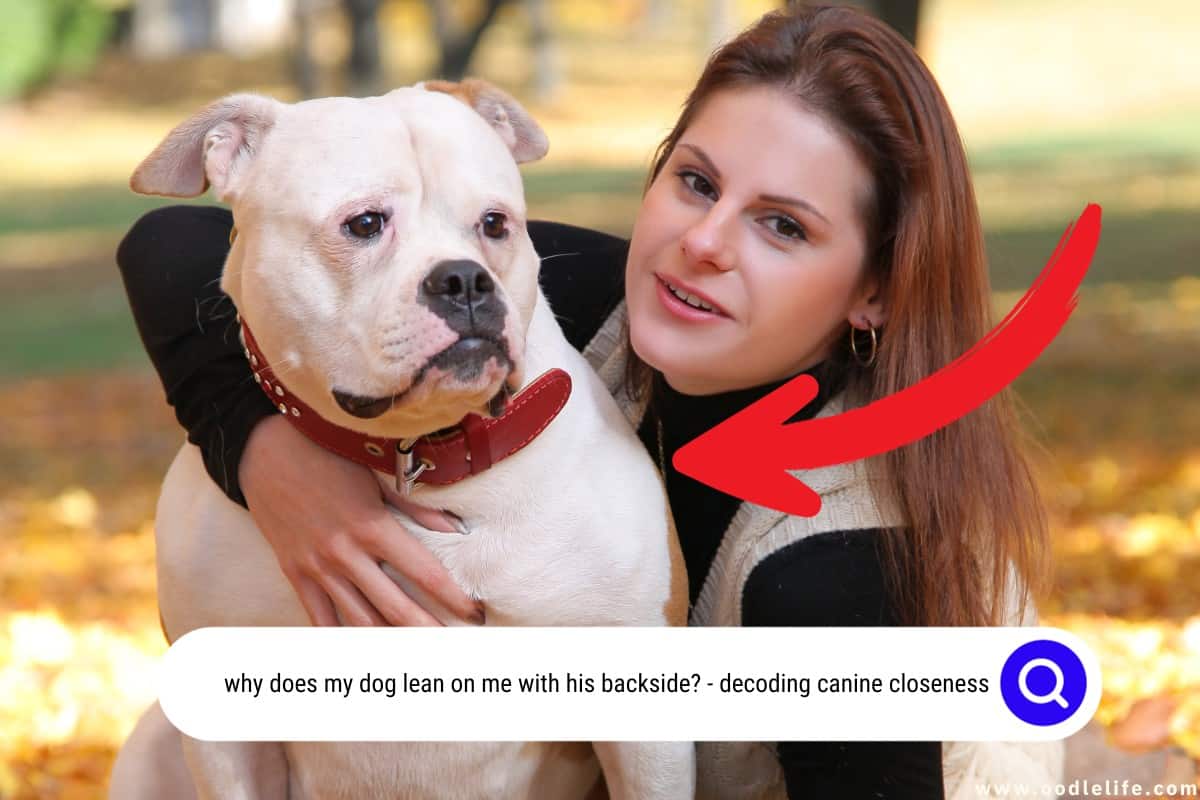
Another reason for this behavior could be related to your dog’s instinctive pack mentality. In a pack, dogs often lean on each other when resting or sleeping, which provides warmth and protection for each member. By leaning on you, your dog might be treating you as a member of their pack and demonstrating their loyalty and trust.
Understanding the Behavior of Dogs
Dogs are social animals that have evolved to live and work in pack environments. They communicate with one another through a variety of postures, facial expressions, and physical contact. One such behavior you might have noticed is when your dog leans on you with their backside.
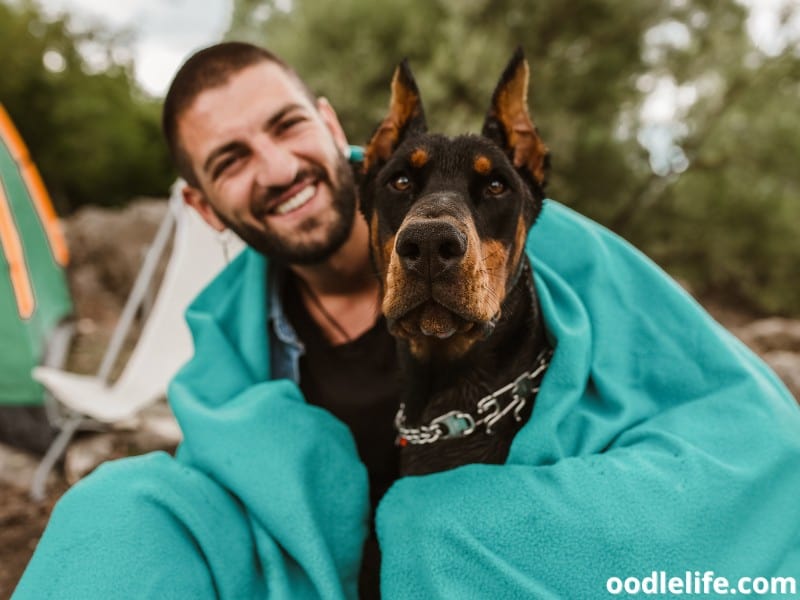
In order to understand this behavior, it’s important to first have a basic understanding of canine instincts and the ways in which they communicate and bond with their human companions.
As pack animals, dogs rely on close bonds within their group to fulfill their social needs for security and companionship. Physical contact is one way that dogs strengthen these bonds and affirm their social connections. When your dog leans against you, they are not only seeking comfort and reassurance, but also conveying a sense of trust and belonging within the relationship.
By accepting and reciprocating their physical contact, you are reinforcing the emotional bond between the two of you.
In addition to bonding, leaning can also serve as a form of communication. Just as humans use body language to express feelings and intentions, dogs use their posture and positioning to send messages to those around them. This leaning behavior may be a way for your dog to tell you that they are feeling comfortable, relaxed, and content in your presence.
It could also be a subtle way for them to ask for attention or affection, indicating that they are in need of some one-on-one time with you.
Furthermore, dogs have certain instincts that dictate their behavior. One such instinct is the need for safety and security. By leaning against you, your dog may be tapping into their ancestral instincts to seek protection from perceived threats.
While these threats might not be real in the modern world, their instincts still drive them to seek comfort and reassurance from you, their trusted pack leader.
It’s important to be sensitive to your dog’s non-verbal cues and try to discern their intent behind the leaning behavior. Take note of any accompanying body language, such as relaxed ears, wagging tail, or a calm facial expression. These indicators will give you a better idea of what your dog is trying to communicate, allowing you to respond accordingly and foster a strong, healthy bond between the two of you.
In conclusion, your dog’s leaning behavior is a combination of instinct, communication, and bonding. By recognizing and respecting these aspects of your dog’s behavior, you’ll be able to better understand your canine companion and enjoy a stronger, more fulfilling relationship together.
Interpretation of Dog’s Body Language
When your dog leans on you with his backside, it’s important to consider the context and the entirety of the dog’s body language. Pay attention to your dog’s ears, facial expressions, and posture to understand their feelings and intentions better.
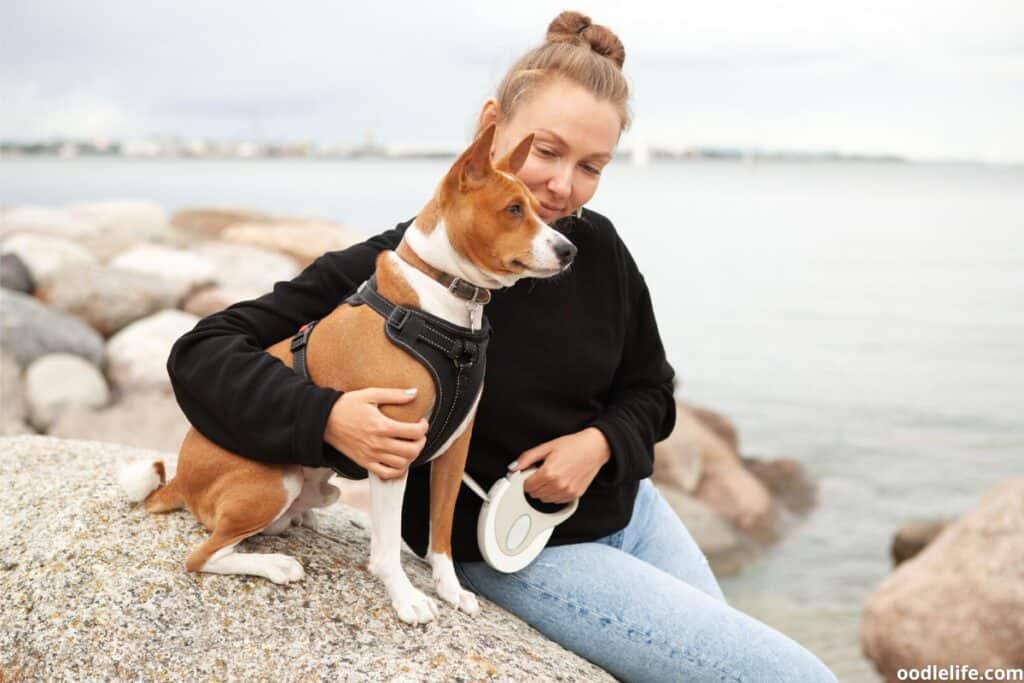
For instance, if your dog leans on you while maintaining a relaxed posture, it could be a sign of affection, or they may want to feel more secure in your presence. Their ears might be in a natural, relaxed position, and their facial expression would be neutral. This bonding behavior might also serve to spread their scent from their glands, marking you as part of their territory.
On the other hand, if your dog leans on you with his backside coupled with nervous posture, such as tucked ears and a lowered head, he may be experiencing anxiety or stress. This could be his way of seeking comfort and reassurance from you.
Scratching or excessive paw licking can also be indicators of stress or anxiety. If your dog leans on you while displaying these behaviors, it’s crucial to consider the environment and any potential triggers that could be causing their unease.
It’s also vital to note that leaning on you with their backside may be a way for your dog to gain attention. Especially if they seem playful or persistent with this behavior, they might be trying to get you to engage with them.
In conclusion, interpreting your dog’s body language is important for understanding their needs and emotions. Be attentive to their ears, facial expressions, posture, and other cues to provide a loving and supportive environment for your furry friend.
Why Dogs Lean On Their Owners?
Sometimes, you may notice that your dog leans on you with their backside. This behavior can leave dog owners wondering why their furry friend is engaging in such conduct. The following paragraphs explore potential reasons behind this behavior.
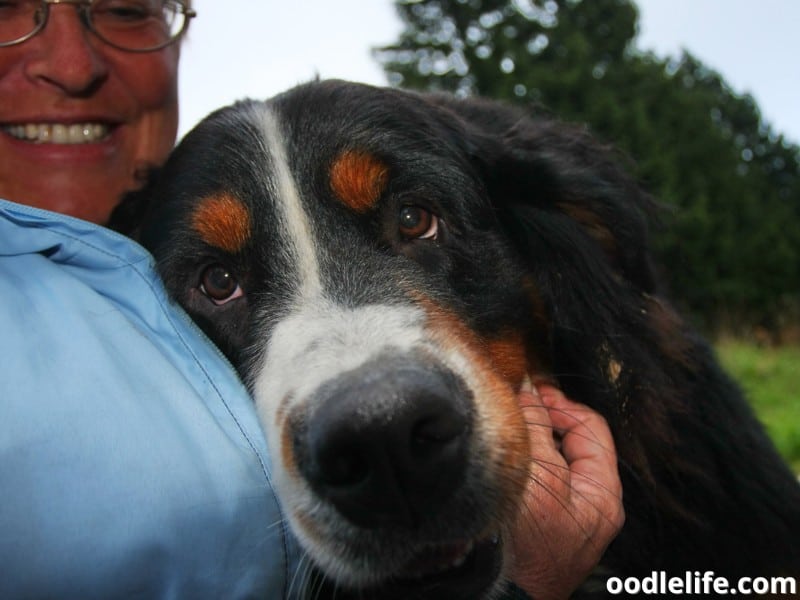
One possibility for your dog leaning on you could be a way of showing affection and bonding with you. Dogs, like humans, seek connections and comfort from those they trust. By leaning on you, your dog may be trying to strengthen the bond between the two of you.
This behavior is most prevalent when you are sitting or lying down, as your dog may feel more secure and relaxed in these positions.
Another reason your dog might be leaning on you is to seek reassurance or protection. If your dog is feeling anxious or nervous, they may lean on you for support, both figuratively and literally. This behavior serves as a way for your dog to feel safe and secure in your presence, using you as an anchor during distressing situations.
Additionally, some dogs might lean on you just because it’s comfortable. They may see you as a sturdy surface to rest against, providing them with physical support and a cozy spot. This can be particularly true for larger dogs who need more significant support while resting.
Lastly, if your dog is leaning on you and displaying other signs of discomfort such as excessive panting, whining, or limping, it might be a sign of pain or injury. If their backside is in pain, they may lean against you to alleviate some discomfort. In such cases, it’s essential to consult your veterinarian to address any potential health issues.
Keep in mind that every dog is unique, and reasons for leaning may vary based on individual personality and experiences. Understanding the context in which your dog leans on you will help you better grasp the underlying motivations behind their behavior.
The Role of Affection and Comfort
When your dog leans on you with his backside, it’s a sign of affection and comfort in your presence. Dogs are social animals, and they form strong bonds with their human family members. This behavior is a natural way for them to express love and cuddle with you.
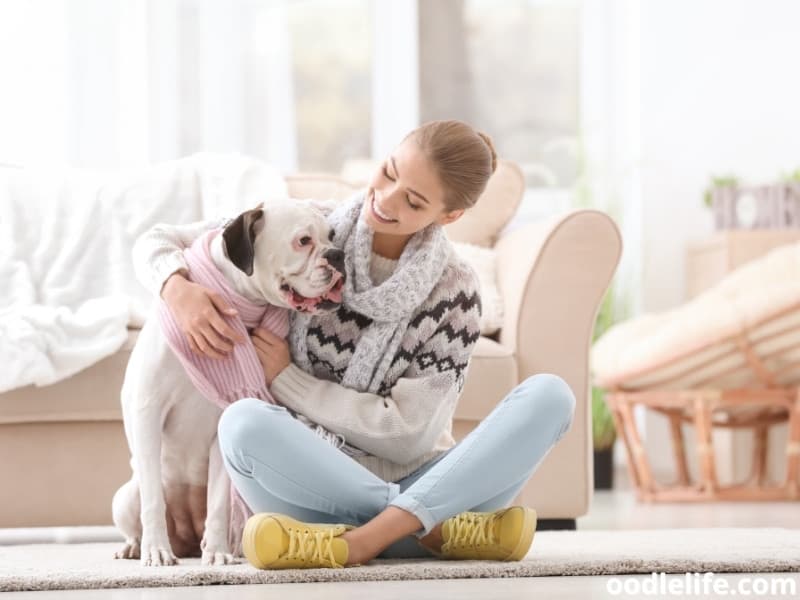
Many dogs seek reassurance and comfort from their humans. Leaning on you can provide a sense of security and help them feel protected. Your dog trusts you and relies on you for support.
When they lean against you, it’s their way of saying, “I’m comfortable with you and know you’ve got my back.”
In daily life situations, snuggles and leaning gestures play a vital role in strengthening the bond between you and your dog. Just like humans, dogs cherish physical contact and the warmth that comes with it. These actions help to create a connection that goes beyond basic needs such as food and shelter.
Sometimes dogs lean on their owners as a means of seeking comfort when they are feeling anxious or afraid. If your dog leans on you during thunderstorms or other stressful situations, they may be looking for reassurance that they are safe and protected. In these instances, it’s essential to respond with gentle petting and soothing words to help ease their anxiety.
In conclusion, the act of your dog leaning on you with its backside is a multifaceted gesture that serves to demonstrate affection, comfort, and a sense of security. By understanding the various reasons for this behavior, you can foster a strong, nurturing bond with your canine companion.
Anxiety and Stress in Dogs
It’s not uncommon for your dog to lean on you with their backside, and this behavior can be attributed to a variety of reasons. One potential explanation is that your dog is experiencing anxiety and stress. Like us, our furry friends can feel nervous in certain situations, leading them to seek comfort and reassurance from their trusted human companion.
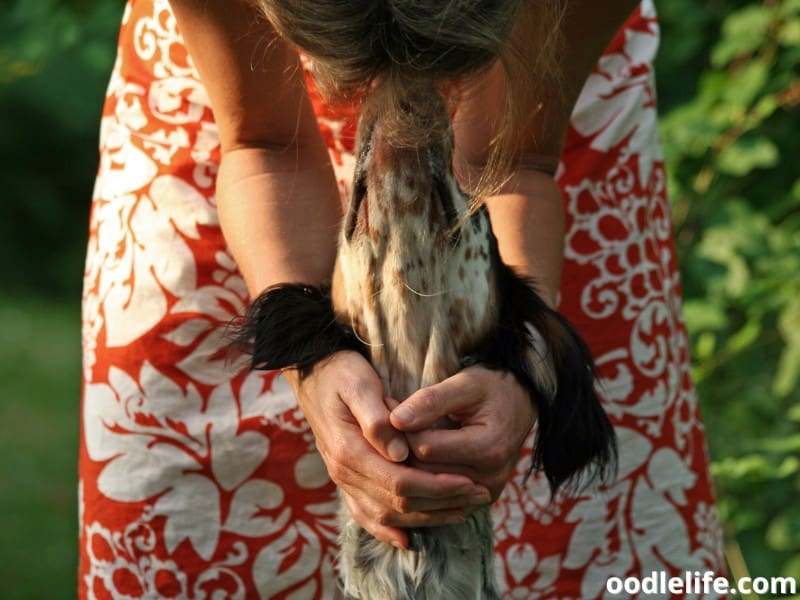
Dogs may experience anxiety for numerous reasons, including separation anxiety, fear, or nervousness. Separation anxiety is a common issue, often arising when your dog is left alone for extended periods. If you notice your dog leaning on you or seeking physical contact when you’re about to leave, it could be a sign of this condition.
Fear is another emotion that can trigger anxiety in dogs. Loud noises, new environments, or unfamiliar people and animals can be frightening for your pet, which may cause them to lean on you as a means of protection and consolation. In these cases, your presence can provide a sense of stability and security for your dog.
Finally, general nervousness can also be a factor, particularly if your dog has a naturally anxious temperament. Some dogs are more prone to anxiety than others, and leaning on you could be their way of coping with this heightened emotional sensitivity.
When your dog leans on you, it’s essential to be supportive and understanding. Offering soothing pets and words of reassurance can help reduce their stress and anxiety, while also reinforcing the bond between you and your canine companion. It’s also crucial to address the root causes of your dog’s anxiety when possible, such as providing sufficient exercise, mental stimulation, and a consistent routine to make them feel secure.
Remember, it’s always better to consult with a professional dog behaviorist or veterinarian if your dog’s anxiety becomes a significant concern. They can offer advice, support, and potential treatments to help your dog overcome their stress and anxiety, ensuring a happier, healthier life for both of you.
Pack Behavior and Dominance
As a dog owner, you may have noticed your canine companion leaning on you with their backside. This behavior has deep roots in pack dynamics and dominance. Dogs are social animals, naturally forming packs and creating a hierarchy within them.
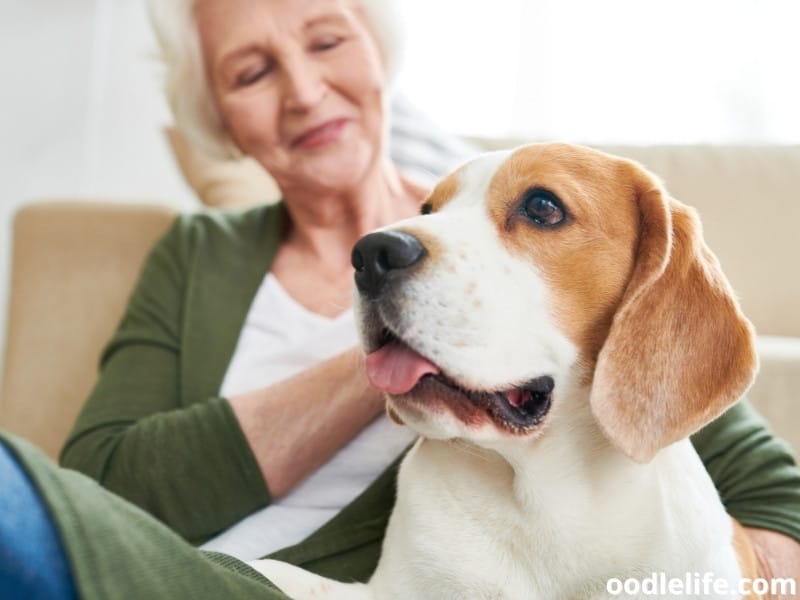
Understanding the origins of your dog’s behavior can help you connect with them on a deeper level.
In the wild, packs consist of a dominant pair, their offspring, and sometimes subordinate relatives. Dominance plays a crucial role in establishing order and maintaining stability within the pack. Dogs display various behaviors to assert their place in the hierarchy, which can include postures, vocalizations, and even physical contact.
When your dog leans on you with their backside, it can be a sign of them seeking security and comfort from their pack leader – you. They’re looking to you for guidance, protection, and emotional support. This behavior may also be territorial, signaling to other dogs that you’re their human and in their pack.
Additionally, your dog could be using this back leaning behavior to assert their dominance over you. If you notice other dominant behaviors – like growling, refusal to move, or pushing you around – you may want to assess your relationship with your dog. Establishing clear boundaries and gently asserting your leadership will help create a balanced and healthy pack dynamic.
On the other hand, leaning on you might not always be about dominance or pack behavior. Some dogs might simply find leaning against you comfortable and reassuring, especially in new or stressful environments. Regardless of the reason, it’s important to remember that dogs are complex pack animals with unique behaviors shaped by their evolutionary history and individual experiences.
Relating Trust and Security to Leaning
When your dog leans on you with their backside, it’s often a sign of trust, security, and connection between you and your canine companion. Dogs rely on their humans for protection and safety, so this leaning behavior is a way for them to feel closer and more secure in your presence.
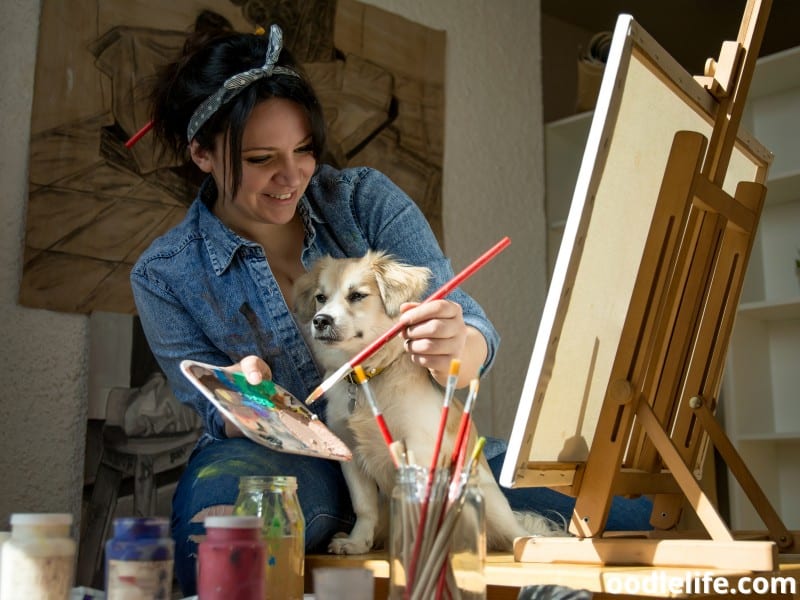
Imagine you’re in a crowd of unfamiliar people, and you instinctively gravitate towards a friend or family member. In the same way, your dog seeks the comfort of your presence when they’re feeling uncertain or vulnerable. This close contact creates a sense of security and assures them that you’ll be there to protect them if needed.
Leaning can also be a sign that your dog trusts you. Trust is an essential component in the bond between dogs and their humans. When a dogs lean into you, they’re demonstrating that they feel safe and comfortable in your company.
This trust allows for a deeper emotional connection, and a strong bond will help in training, socialization, and overall well-being.
It’s important to recognize your dog’s need for security and protection and respond accordingly. If they lean on you, acknowledge their feelings and provide them with the comfort and safety they’re seeking. This can be achieved through physical contact, such as petting or stroking them, or simply by sitting or standing close by.
By understanding and responding to this behavior, you’re helping to reinforce your dog’s trust in you and strengthen your bond.
Keep in mind that every dog is different, and their reasons for leaning on you might vary. Some dogs lean out of habit, while others might be more fearful or anxious. In any case, understanding your dog’s motivations for this behavior is an essential step in providing them with the trust, security, and safety they need to thrive.
Physical Aspects Affecting a Dog’s Leaning
When your dog leans on you with their backside, there could be various physical factors at play. One possible reason is your dog is seeking better balance. Leaning on you may provide your dog with additional support when they’re standing or sitting, especially if they’re feeling tired or uncomfortable due to joint issues or muscle pain.

Temperature plays a role in your dog’s leaning behavior as well. If it’s cold, your dog may snuggle up to you for warmth. In contrast, if it’s hot, they might use your body to cool down by transferring some of their body heat.
It’s essential to pay attention to the temperature and provide your dog with a comfortable living environment.
It’s common for dogs to experience itches they can’t reach, and using their backside’s pressure against you helps relieve the itch. Keep an eye on your dog’s behavior to determine if they’re feeling itchy, and make sure to address any possible skin issues or parasites that may be causing discomfort.
Scent glands are another factor influencing your dog’s leaning behavior. Your dog has scent glands located around their backside, and rubbing against you may transfer their scent onto you. In doing so, your dog is marking you as part of their territory, strengthening the bond between both of you.
Sometimes, your dog might lean on you in response to the scent of grass. When a dog leans against you after rolling around in the grass or playing outdoors, they could be sharing an interesting smell they picked up, which dogs often do with their pack members.
In summary, there are various physical reasons why your dog leans on you with their backside. Taking your dog’s individual temperament, breed, and circumstances into consideration will help you better understand this behavior and ensure their well-being.
The Role of Emotions in a Dog’s Behavior
When your dog leans on you with their backside, it can be a display of various emotions like comfort, love, trust, and anxiety. In fact, dogs are emotional beings and their behavior greatly depends on how they feel.
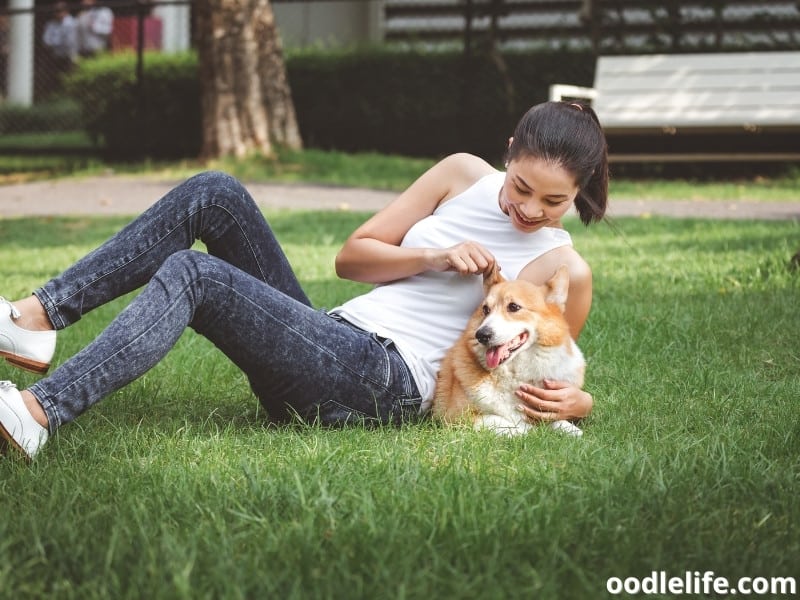
For instance, when your dog is comfortable and feels safe with you, leaning on you can be their way of showing affection and closeness. It signals that they trust you and see you as their provider of safety and support. Remember, physical touch is their language, and leaning on you is their way of saying “I love you” in that language.
Anxiety can also play a role in this behavior. Some dogs lean on their humans when they are feeling uneasy or anxious about something in their environment. In this case, your dog is seeking reassurance and comfort from you, their trusted companion.
Just as a child might cling to their parent during a scary movie, your dog may lean on you when they are feeling uncertain or insecure.
It’s essential to understand that each dog is different, and the reasons behind this behavior can vary. So when you observe your dog leaning on you, try to assess their overall demeanor and the context in which the leaning is happening.
To further strengthen your bond and better understand your dog’s emotional signals, pay close attention to their body language. For example, relaxed ears and a wagging tail often indicate happiness, while a tucked tail and shivering can indicate fear or anxiety.
By being attentive to the emotional signals your dog is sending, you can not only deepen your relationship but also ensure that you’re meeting their needs for comfort, love, and trust.
Seeking Attention and Possessive Behavior
Your dog leaning on you with their backside can be a form of seeking attention. Dogs are social animals and love bonding with their owners. By leaning against you, they’re making physical contact and strengthening your connection.
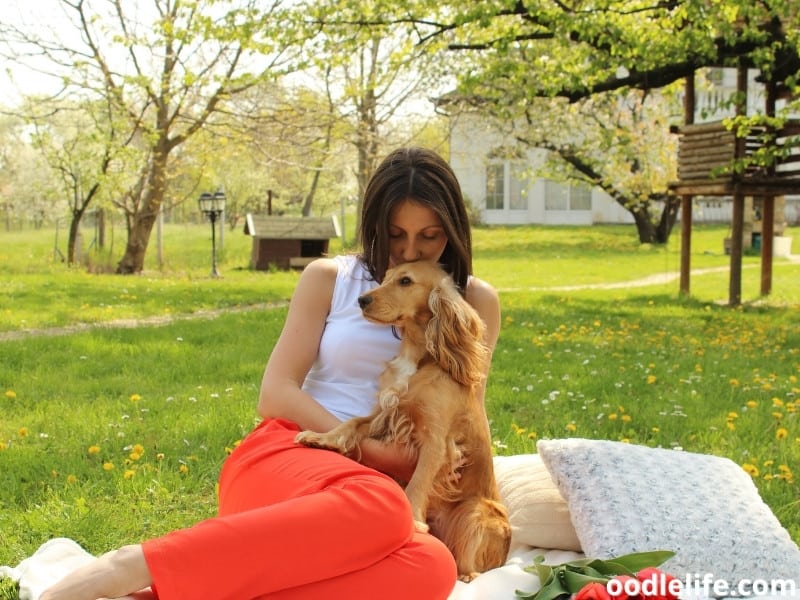
This closeness might help them feel more secure and loved.
Sometimes, a dog leaning on you with their backside might stem from possessive behavior. This is especially true if they tend to guard you from other people or animals. A dog that is more possessive may show several gestures to indicate that you are their territory:
- Lean against you, particularly with their backside
- Sit on your feet
- Place their paws on your lap
- Slightly nudge you away from other animals or people
In cases where your dog is leaning on you because they feel submissive, it can be a sign that they’re seeking comfort and reassurance. Submissive dogs tend to be more sensitive to their owners’ emotions, so they might respond to your cues by leaning against you for support.
Lastly, it’s essential to recognize the difference between seeking attention and guarding behavior. A guarding dog will lean on you to establish their position as the protector, displaying watchful and alert behavior. They might also become aggressive if they perceive a threat to you or your territory.
Pay close attention to your dog’s body language and the context in which they lean on you to get a better sense of their motivation. Understanding the root cause can help you determine how to respond and ensure a healthy, happy relationship with your canine companion.
Exploring Leaning as a Socialization Activity
When your dog leans on you with his backside, it might seem a little peculiar, but this behavior is actually quite common. Dogs primarily rely on body language to communicate, and this leaning can provide insights into your dog’s socialization and attachment to you.
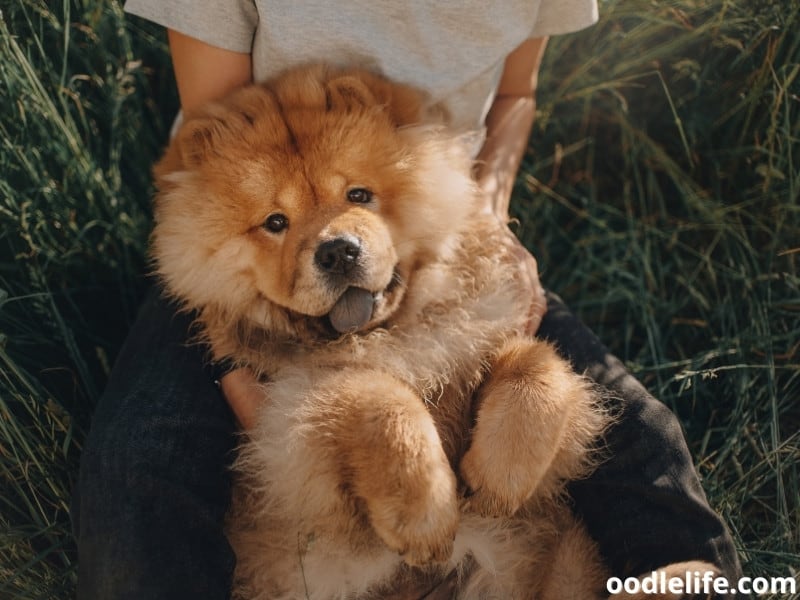
Socialization plays a significant role in your dog’s life, as it helps them build bonds and learn appropriate behaviors within their family or pack. By leaning on you, your dog might be demonstrating his trust and reliance on you as the leader of his pack. This non-verbal cue indicates that your dog feels secure and close to you.
As a dog owner, you’re likely familiar with the importance of establishing a sense of belonging in your furry companion’s life. In the wild, dogs live in packs that provide them with safety, support, and a social network. By leaning on you, your dog is expressing the need for connection and reassurance, just as they would with other pack members.
It’s worth noting that leaning can be both a sign of affection and a request for attention. When your dog leans on you, he might simply be asking for some petting or playtime. As you and your dog bond over time, you’ll be able to quickly recognize the subtle differences in his body language and cater to his needs accordingly.
As you continue to strengthen the bond with your canine friend, don’t be surprised if he leans on you with his backside more frequently. It’s a natural part of his unique communication with you. Recognize this peculiar behavior as an opportunity to foster a healthy and loving relationship with your dog, built on trust and understanding.
When To Take Your Dog To The Veterinarian?
You might be wondering when the right time to take your dog to the veterinarian is, especially if they’re leaning on you with their backside. While this behavior might appear humorous or endearing, it’s essential to ensure that there are no underlying health issues.

Monitor your dog’s behavior. If you notice any changes in their behavior, appetite, or energy levels, it’s essential to take them seriously. Keep an eye on any limping, excessive scratching, or constant licking.
These might be signs of discomfort that require a vet’s attention.
Routine check-ups. Even if your dog seems healthy, regular checkups with the vet are important for maintaining their overall well-being. Vaccinations, dental cleanings, and other preventive care measures can help catch potential problems before they become severe.
In case of injury. Accidents can happen at any time, and it’s crucial to seek veterinary care immediately if your dog suffers a noticeable injury. This could include wounds, fractures, or difficulty breathing.
Prompt medical attention can make all the difference.
Finally, trust your instincts. As a pet owner, you know your dog better than anyone else. If something seems off, don’t hesitate to contact your veterinarian and discuss your concerns.
Keeping a close eye on your dog’s health and well-being is an essential part of being a responsible pet owner.